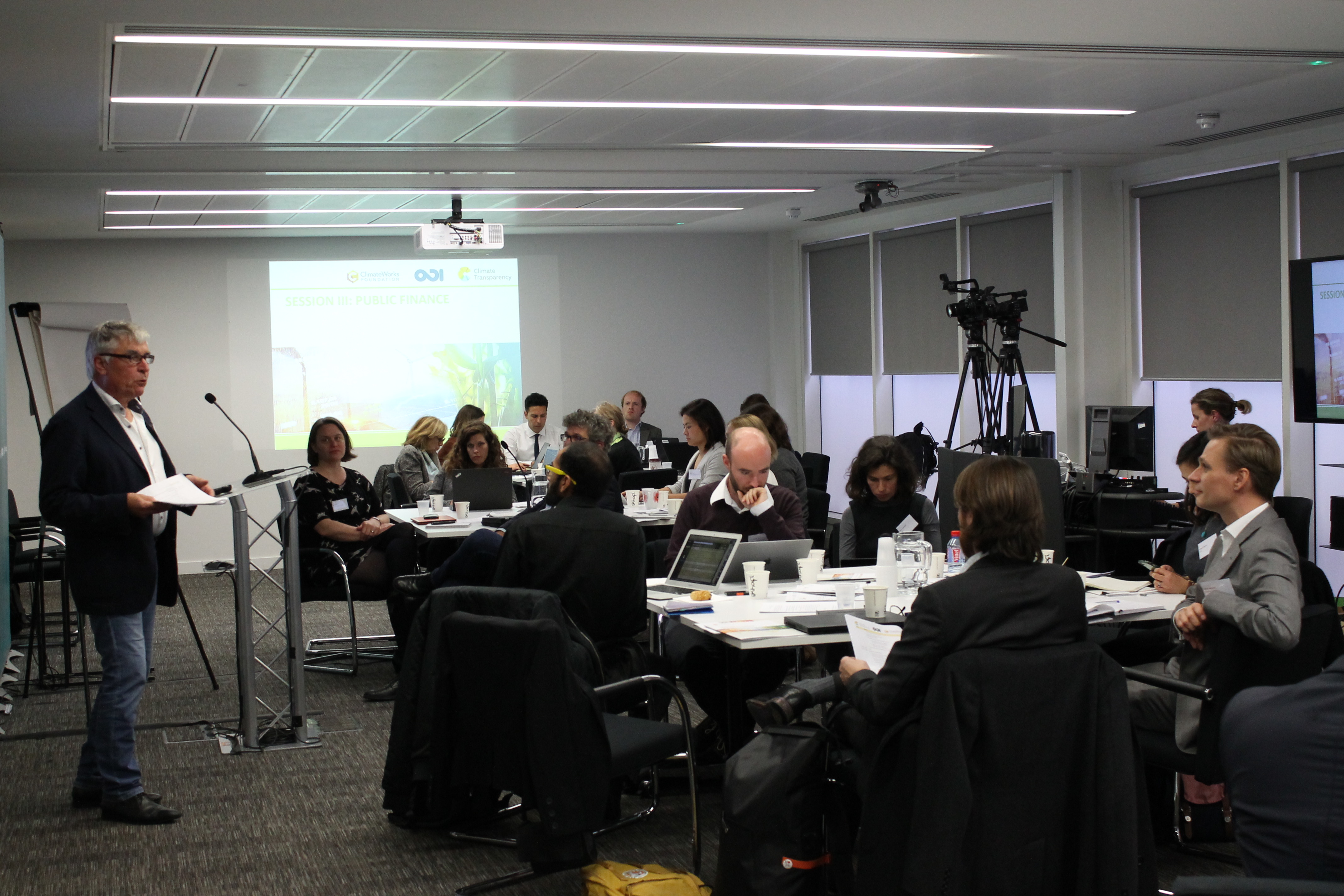London, 23 October 2017; The workshop “Financing the transition from brown to green in G20 countries”, conducted by Climate Transparency has been financed by the ClimateWorks Foundation and hosted by the Overseas Development Institute. It brought together experts from think tanks, governments and financial institutions to explore the information needed to develop a comprehensive yet concise picture on the financing of the transition to low-carbon, climate resilient G20 economies.
To reach the goals of the Paris Agreement, substantial public and private financing must be mobilised. This includes to shift existing flows towards climate-compatible investments. G20 governments have a critical role in progressing the financing of this transition. In advanced economies, public resources account for about 40% of the infrastructure investment – a key area for driving change. But governments’ influence is equally important in the early stages of developing green markets where they can help overcome well understood challenges to securing private investment such as real and perceived risks, insufficient returns on investment, competing subsidies and policies, capacity and information gaps, competing development priorities and other regulatory and institutional barriers.
Against this background, workshop participants discussed potential indicators comparing the action of G20 countries in the four areas: 1) Policies and regulations, 2) Fiscal policy levers, 3) Public finance and 4) Private finance. They first examined how to compare relevant policies greening the financial system and (re)directing finance in G20 countries, including national climate investment plans, disclosure policies for corporations, asset owners and asset managers, support of development of green bond markets and climate-related investment requirements of institutional investors and development finance institutions. In the second session, participants brainstormed how to develop a net-carbon price indicator integrating carbon prices, energy taxes and fossil fuel subsidies. In addition, the idea came up to contrast public spending on fossil fuels with revenues generated through carbon pricing, an indicator that might be less complex and more material to finance ministries. Further workshop discussions focused on the questions on how to create an indicator showing public finance spending across sectors in “brown” vs. “green” projects as well as a green bonds comparison of G20 countries. Participants highlighted that G20 comparisons of fiscal policies and public finance for resilience, considered crucial in light of the Argentinian G20 Presidency, face huge data gaps.
In the last session, participants discussed how to best create impact with existing indicators – i.e. how to incentivize a race-to-the-top in climate action with these indicators. Questions such as which information is relevant for those central for climate, for whom climate is not a central concern and how to reach finance ministries, G20 stakeholders and finance media were discussed. Climate-related financial disclosure was considered as particularly relevant to public and private finance actors – participants stressed that assessing and disclosing the financial risks of climate change would accelerate change. Participants further emphasized to always link to the interest of finance actors, e.g. exploring and addressing the short-term focus of capital markets to secure a more sustainable allocation of capital for the long-term. Overall, participants agreed on the importance of the type of messenger: The message to governments and regulators is always stronger when it comes from the financial sector itself.
The workshop discussions will feed into the finance section of Climate Transparency’s Brown to Green Report 2018.



















